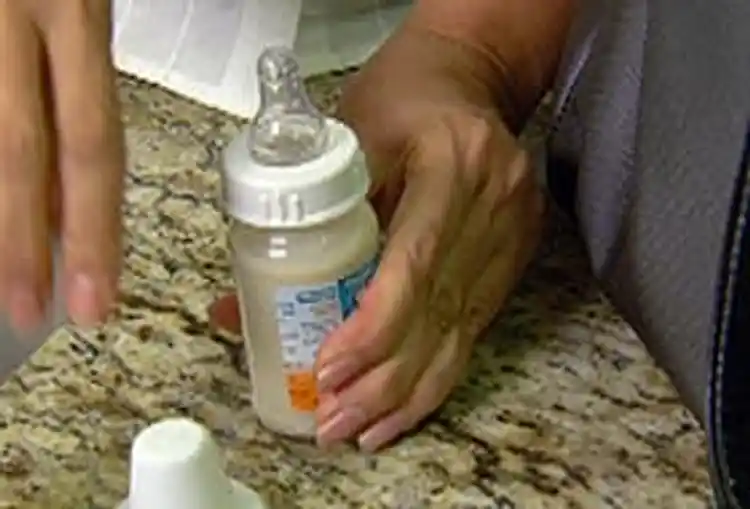Choosing an Infant Formula

Hide Video Transcript
Video Transcript
Kimberly Manning, MD
Whether they start with it or not, many parents rely on formula at some stage in their infant's first year. The options – and there are many – may seem overwhelming. So we're here to provide you with a formula for success – step by step. Kimberly Manning, MD (cont.)
Infant formulas fall into three basic categories: Cow's milk; Soy; Or a specialized mix – such as hypoallergenic or those for premature, low-birth weight babies. Most babies do just fine with cow or soy-based formulas. For babies who react adversely so-called hydrolyzed versions may be easier to digest. Unfortunately, these products can be very pricey. Even regular formula can be a big chunk of your baby budget, so it's wise to compare prices and consider buying in bulk – but be sure to hold on to receipts in case you need to change brands. Kimberly Manning, MD (cont.)
Formulas are packaged and sold in three forms. Powder is the least expensive but requires preparation. To mix, use one scoop of powder for every two ounces of boiled and cooled water – and then, of course, shake! Liquid concentrates also require adding purified or boiled and cooled water and shaking. The equation is easy – equal amounts of concentrate and water. Like powders, you can prepare individual or larger servings, which should be used within 24 hours. Ready-to-feed formula costs the most but requires no mixing, measuring and no mess. It can be a lifesaver if you are traveling and on the go. Unused portions still in the container can be stored in the fridge for up to two days – but never freeze it or the solution will separate. Kimberly Manning, MD (cont.)
Got all that? Good! Now, on to a couple of other important points. No matter what formula you use, make sure it is iron-fortified. Formula-fed babies need the added iron until they begin eating solids. Formula companies are also adding DHA and ARA, two fatty acids found in breast milk that are thought to be important in brain and eye development. Kimberly Manning, MD (cont.)
Let's talk about water. The American Dental Association warns against using highly fluoridated tap water to prepare infant formula – it could increase the risk of white streaks on the teeth called enamel fluorosis. So have your water tested or use purified or distilled water to mix your formula – or better yet, alternate back and forth between mildly fluoridated water and purified. If you don't your pediatrician may add fluoride supplements to your baby's diet at about 6 months. Kimberly Manning, MD (cont.)
Regardless of the type of water you use, the FDA recommends bringing it to a rolling boil for one minute, followed by a quick cooling to body temperature if being used right away. Don't add boiling water to formula, as it degrades nutrients. Using it later? Refrigerate immediately after mixing, and bring back to body temperature by warming in a pot of water on the stove—no microwave allowed. Remember the wrist test! Kimberly Manning, MD (cont.)
If you have questions or concerns about formula – how to mix it, what it contains – or the quality of your water supply, consult your pediatrician. Even small mistakes sometimes can cause serious problems, so it's best to talk it through step by step. For WebMD, I'm Dr. Kimberly Manning. 
